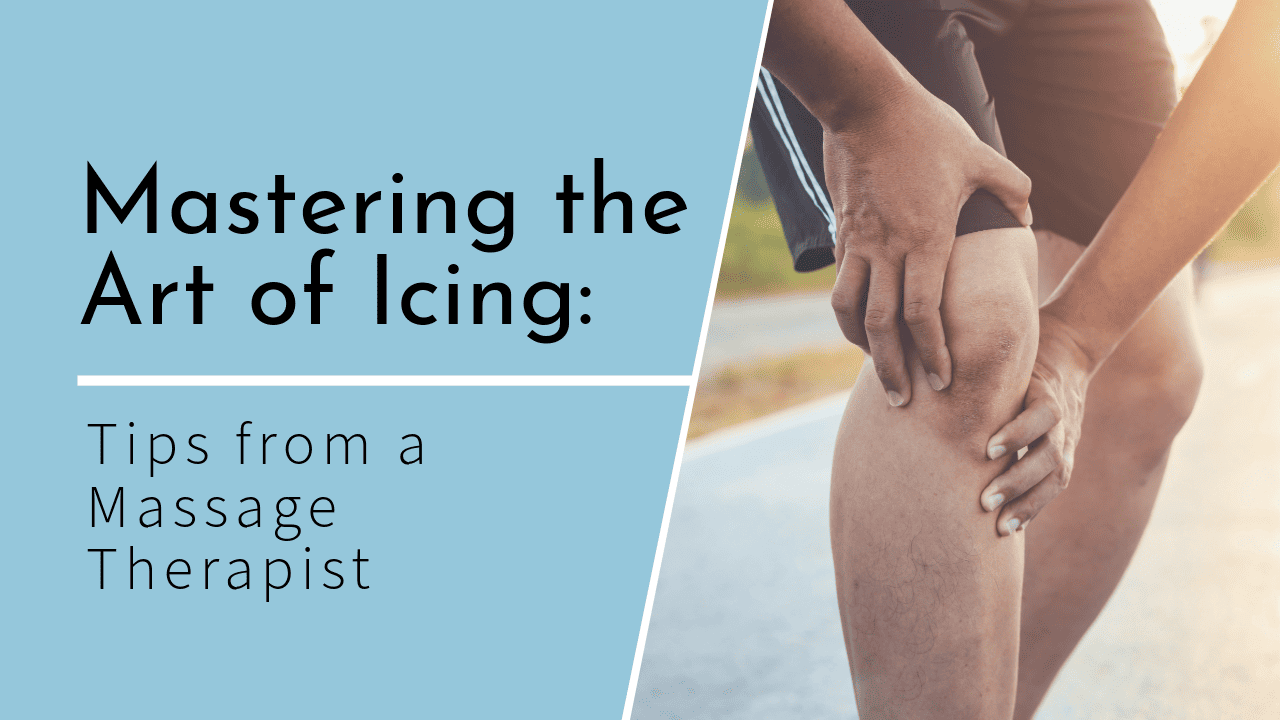To Use Ice or Use Heat, That Is the Question!
Of course, heat is always the most pleasant to have against your skin. Many doctors will advise you to use heat, however, when you have an injury or spasm, inflammation is the body’s first response. Heat is never indicated when inflammation is present, because it draws blood to the area. More blood to an injured area is like bringing more cars into an already established traffic jam. When in doubt, use ice!
Understanding How to Ice
When you ice properly, it can help to reduce inflammation, facilitate healing and minimize pain. When our brains recognize that a muscle is in trouble, it will bring pain to the area. Pain is a knock on the door to let you know that you need to pay attention and address the present issue or a more serious issue may result. As a massage therapist, I’ve seen the benefits of proper icing firsthand and am here to share some tips on mastering the art of icing.
Understanding the Importance of Icing
Icing, or cold therapy, is a frequently utilized technique for the management of pain, and inflammation. The technique operates by applying ice, to an injured area. This cold exposure causes blood vessels to constrict, which in turn, decreases swelling and inflammation in the impacted area. The result is not only a reduction in discomfort, but also a numbing effect that brings relief to the area. This method can be extremely beneficial in alleviating the pain and inflammation associated with various forms of injuries and physical stress. It will speed recovery.
How to Apply Ice Correctly
The correct method of ice application can greatly impact its effectiveness. To begin with, never place the ice directly on your skin as this can lead to a frostbite condition. Instead, use a thin moist cloth to prevent direct contact. a thin moist cloth allows the ice to quickly penetrate through to the skin. Make sure to use ice cubes in a zip lock bag, not a gel pack. (The gel pack does not stay cold long enough.)
Three Stages of Icing:
1. It’s cold.
2. It starts to hurt – keep the ice in place or lift momentarily to give yourself a quick break.
3. Finally, it becomes numb.
Remove the ice once it becomes numb This process can take 10-15 minutes. When the ice is removed and the area still numb, mindfully stretch. Repeat as often as possible as long as the skin has returned to normal temperature prior to icing again.
What to Expect While Icing: Sensations and Reactions
In the second stage of icing, you may experience an intense, biting cold feeling which might be uncomfortable. Remember the brain can no longer perceive danger when the muscle is numb, hence, keep the ice on to the point of numbness. This is the point where mindful, gentle stretching is important to incorporate. Mindful, meaning – pay attention to what you’re feeling. Do not over stretch or bounce. More is not better!
In addition, ice will draw blood out of the area, after which, it will slowly flow back into the muscle. This response flushes the area of toxins.
Stretching allows muscles to extend, releasing knotted fibers. Knots are a natural reaction where muscle fibers become entwined and stuck together. They are the end result of one of the “uses” – abuse, misuse, and overuse. Stretching on a regular basis, is one of the most important gifts to offer your muscles. It will help maintain healthy muscles. If you take care of them, they, in return, will take care of you. That’s a win-win.
Timing Matters: When to Ice?
Mastering the art of icing requires understanding its purpose and knowing how to ice properly. This technique, when used correctly, can be an efficient tool for alleviating pain and inflammation from injuries. Remember to ice your injury promptly and use a thin, moist cloth to protect your skin. Each icing session should take no more than 10 – 15 minutes. It’s essential to note, that while icing can provide immediate relief, it’s not a substitute for professional medical care. Therefore, always consult a healthcare professional for personalized advice regarding your specific injury and its treatment. As a massage therapist, I hope that these tips can assist you in leveraging the benefits of icing to facilitate your recovery journey.
Once the Pain Has Started to Dissipate
Once the pain has started to ease, then it’s a good time to alternate this ice therapy with heat. Ice first, end with heat. Stretching continues to be indicated whether after icing or heating.

